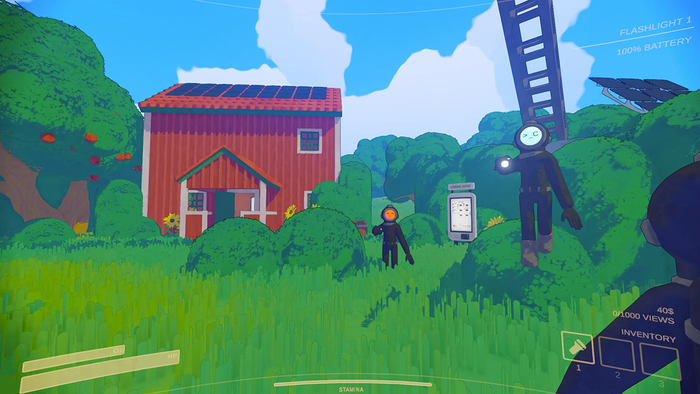In the postmortem for the April 2013 issue of GD Mag, Garth DeAngelis, lead producer on XCOM: Enemy Unknown, discusses the decisions that went into building an optional, integrated tutorial into the game.
April 5, 2013

Last year's XCOM reboot was a roaring success, with critics and gamers showering the Firaxis Games-developed title with praise. But before the design team could get to the point where the game was deemed fun, it had to overcome the stigma behind the word "accessibility." In the postmortem for the April 2013 issue of Game Developer magazine, Garth DeAngelis, lead producer and level designer on XCOM: Enemy Unknown, discusses the decisions that went into building an optional, integrated tutorial into the game, while also peeling away low-level mechanics to keep the game snappy. He also notes how this could become an issue at times, as some design elements stretched out into post-production, and features were still being implemented beyond the Alpha stages. Here are some choice extracts from the postmortem:
What went right: Overcoming the "accessible" stigma
Even before beginning work on XCOM, we heard it all before: Games had become too easy. The development (or marketing) buzzword "accessible" translated to "dumbing down," the idea that developers would take an otherwise deep, rich, and satisfying game and distill its intricacies to its barest form so the entirety of the world could understand, buy, and play said game. It sounds hyperbolic, but I've seen games with easy modes that literally played themselves, making failure impossible, so this stigma against accessibility wasn't without merit! Making a game "for the masses" could be the ultimate transgression, especially for a complex game with a hardcore past, and we anticipated that XCOM fans would be skeptical that our work would hold up to those who fell in love with the original. While UFO: Enemy Unknown may have been magnificent, it was also a unique beast when it came to beginning a new game. We often joked that the diehards who mastered the game independently belonged in an elite club, because by today’s standards the learning curve was like climbing Mt. Everest. As soon as you fire up the original, you’ll be placed in a Geoscape with the Earth silently looming, and various options to explore within your base — options including reading (unexplained) financial reports, approving manufacturing requests (without any context as to what those would mean later on), and examining a blueprint (which hinted at the possibility for base expansion), for example — the player is given no direction. Even going on your first combat mission can be a bit of a mystery (and when you do first step off the Skyranger, the game will kill off a few of your soldiers before even seeing your first alien—welcome to XCOM!). While many fans on the team found this learning curve to be a part of the game’s charm and wore it as a badge of honor, we ultimately knew that, in 2012, we needed to enable gamers to experience the truly fun elements without overly testing their patience. But neither could we bear to dumb XCOM down. We were on a mission to flip the perception on streamlining, to remove the stigma that accessibility equaled a dirty word. We wanted anyone to be able to give XCOM a whirl without expecting them to become fluent in the game’s many systems on their own accord. At the same time, we needed to preserve all of the richness, depth and challenge ingrained in the core pillars. If someone wanted to walk away from the experience due to the game's challenge, we were okay with that; but we didn’t want to alienate anyone simply due to a lack of information. To accomplish this, we built an optional, integrated tutorial that peeled off the components of XCOM one layer at a time. It was important to keep this hour-and-a-half experience optional, as experienced players could save earth again without the tutorial force-fed to them (and we also knew some players, even in 2012, would want that old-school badge of honor by skipping the tutorial altogether, which is somewhat appropriate for certain types of X-COM fans). The introduction to the game wasn't the only area we redesigned. Jake Solomon and the design team refined low-level mechanics from the original, such as removing Time Units and capping the squad loadout at six. Both of these changes were the result of internal playtesting over the course of many months, with the development team finding a combat "sweet spot" with respect to approximate time spent on a map and number of decisions made per turn (we found, depending on map size, battles should average 20 minutes, not to exceed 50 minutes on the absolute longest missions). Six units also made every decision vitally important, promoting group tactics with no moves feeling like unnecessary filler. This "new era of accessible" mindset also helped the design and user interface teams build a platform-agnostic experience. This is an element that could have gone horribly wrong (and did have its inherent challenges, detailed later), but the team did an admirable job of crafting a historically PC experience for consoles as well. We knew games like XCOM weren’t traditionally available on Xbox 360 and PlayStation 3, but we’re extremely happy we could provide the same experience (without compromising features or "dumbing down" the console versions) across all platforms.
What went wrong: Design continued into post-production
XCOM required constant design iteration, with some features being implemented beyond Alpha. It may sound cliche, but Firaxis has always lived by the mantra "Find the Fun," and the company takes that very seriously. Sometimes, Fun can be a challenge to find, especially in a product that is unlike any other we’ve built before. XCOM boasts two interdependent systems that could almost be standalone games, and discovering that special synergy between the two was the key to unlocking the magic within the XCOM universe. Trying to focus concurrently on both gameplay layers was challenging. We spent various milestones on certain features that didn’t progress as we’d hoped. By mid-production, the strategic layer was a turn-based card system for various months, and it stagnated while the team focused on improving combat. Ultimately, the strategy layer was molded into the version we’re satisfied with, but it was neglected for too long and required a late Half Life-inspired Cabal process to get there—we (myself, Solomon and other members of the dev team as necessary) would meet every morning, every day, until each component of the strategy layer had a concrete gameplan and a clear implementation schedule. Additionally, the tutorial and narrative, critical components of the game, couldn’t be pushed to final until the design was locked. And since the design tentpoles ran late, the narrative team (including animators, writers, and audio) came under immense pressure to finalize high-quality cinematics in an extremely short timeframe. The extra design time helped make the game as good as it could possibly be from a gameplay perspective, but it's worth asking whether we could have made tough calls on certain systems earlier in the schedule. This is one of game development’s largest challenges: holding a game's design to immovable deadlines can be stifling to the iterative and tricky-to-quantify creative process. Shipping an unpolished combat game with a completely disconnected strategy layer would have spelled disaster for the future of XCOM, so we kept the process malleable much later into the schedule, allowing the team to find the answers through discovery and experimentation. Practices like the design cabal helped the team focus on areas of the game that weren’t fun, but in a perfect world, we would have locked down as many high-risk systems as possible as pre-production wrapped up. We did ultimately cut content, but the bulk of our wishlist shipped in the final product, which was great for the game but taxing on the team.
More in the April issue
The April issue of Game Developer magazine is now available via subscription and digital purchase. You can subscribe to the print or digital edition at GDMag's subscription page, download the Game Developer iOS app to subscribe or buy individual issues from your iOS device, or purchase individual digital issues from our store.
You May Also Like





